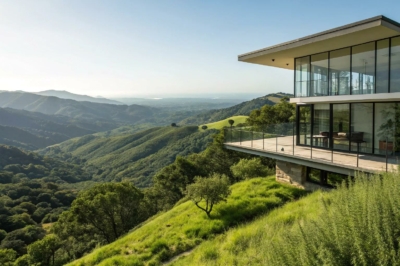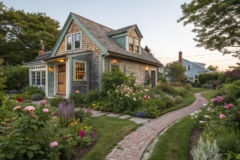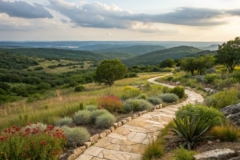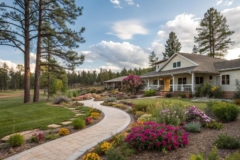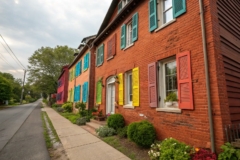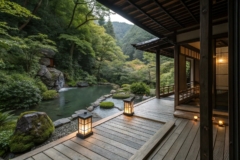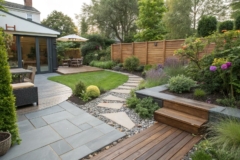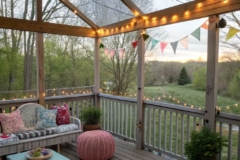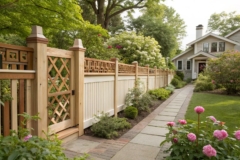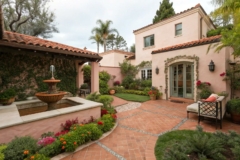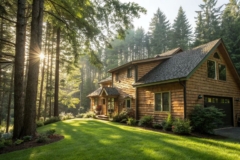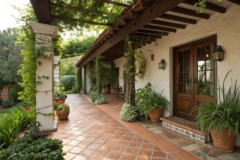1. Create Terraced Layouts
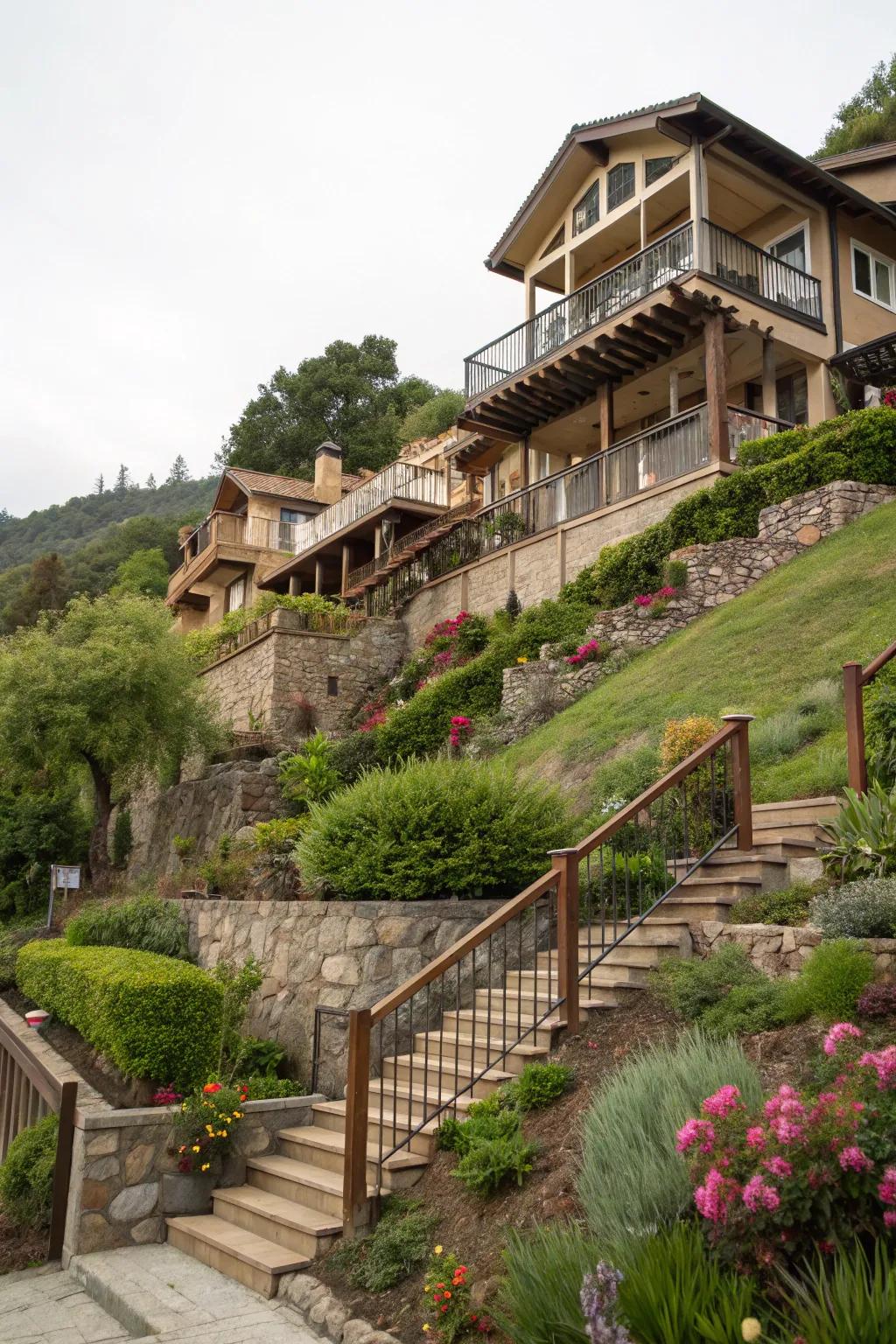
Multi-level designs can adapt beautifully to the slope, offering unique spaces at each level. This layered approach has allowed me to design homes that feel both expansive and intimately connected to the land.
Some ideas to consider:
- Outdoor Solar Garden Lights: Illuminate your terraced garden paths with eco-friendly solar lights for added safety and style.
- Retaining Wall Blocks: Build durable retaining walls to enhance the structure and beauty of your hillside home.
- Weather-Resistant Patio Furniture: Transform your hillside terraces into comfortable outdoor living spaces with robust patio furniture.
2. Embrace Minimalism

A minimalist design can highlight the natural beauty of a hillside setting. I’ve found that less truly is more when the landscape takes center stage.
These products might be useful:
- Minimalist Outdoor Furniture Set: Enhance your hillside retreat with elegant yet simple outdoor seating for ultimate relaxation.
- Frameless Glass Railings: Install sleek glass railings to maintain an unobstructed view of the stunning landscape.
- Natural Wood Wall Cladding: Add warmth to your interiors with eco-friendly wood cladding for a minimalist aesthetic.
3. Use Native Landscaping
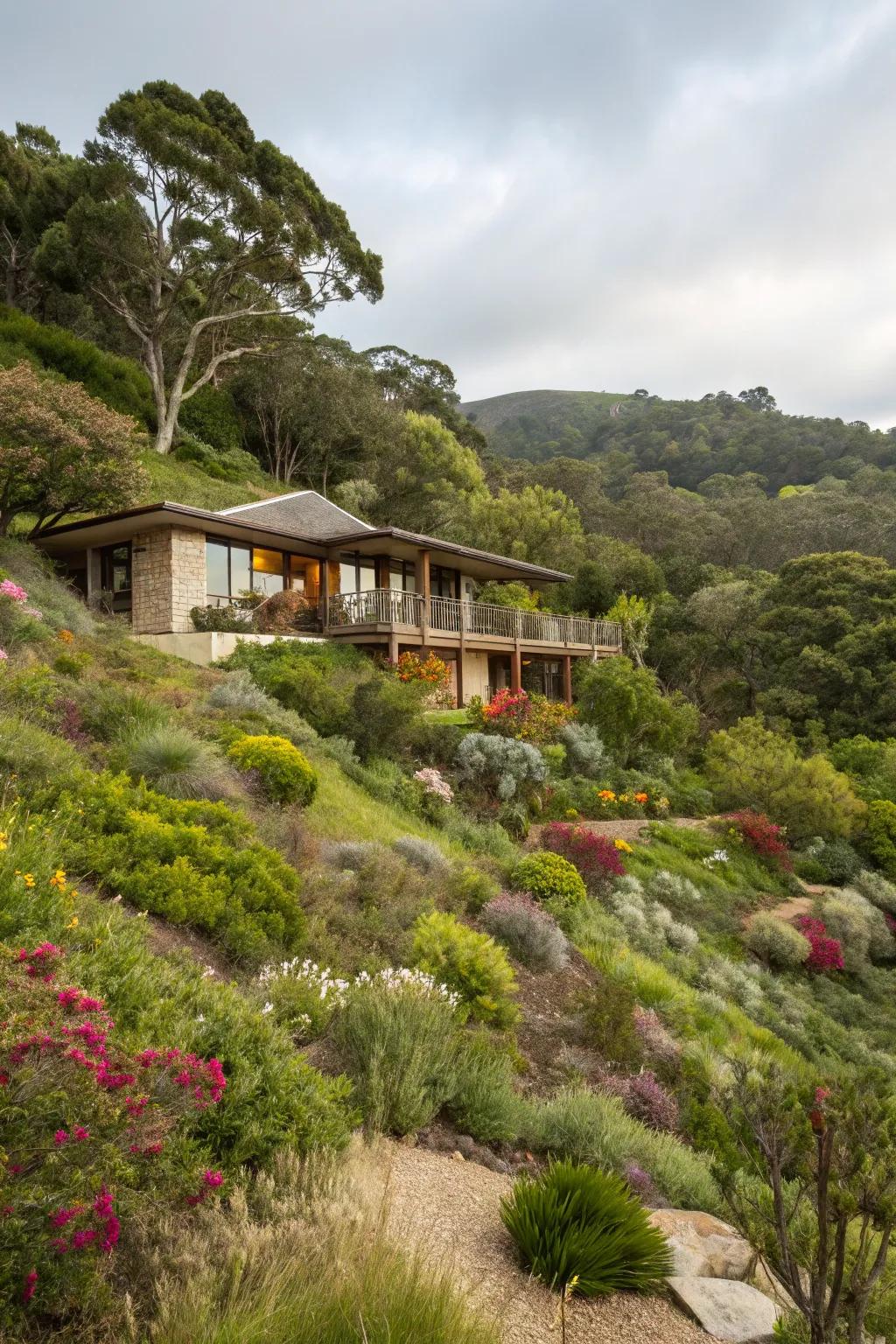
Choose plants that thrive on hillsides to create a low-maintenance, beautiful landscape. I’ve found that native plants not only look great but also support local ecosystems.
A few choices to try:
- Drought-Tolerant Native Plant Seed Mix: Enhance your hillside with a resilient seed mix supporting local wildlife and reducing maintenance.
- Native Shrub and Bush Collection: Plant these vibrant native shrubs to add beauty and attract beneficial pollinators to your garden.
- Hillside Landscaping Ground Cover Plants: Use these ground cover plants to prevent erosion and beautifully blanket your hillside landscape.
4. Maximize Scenic Views
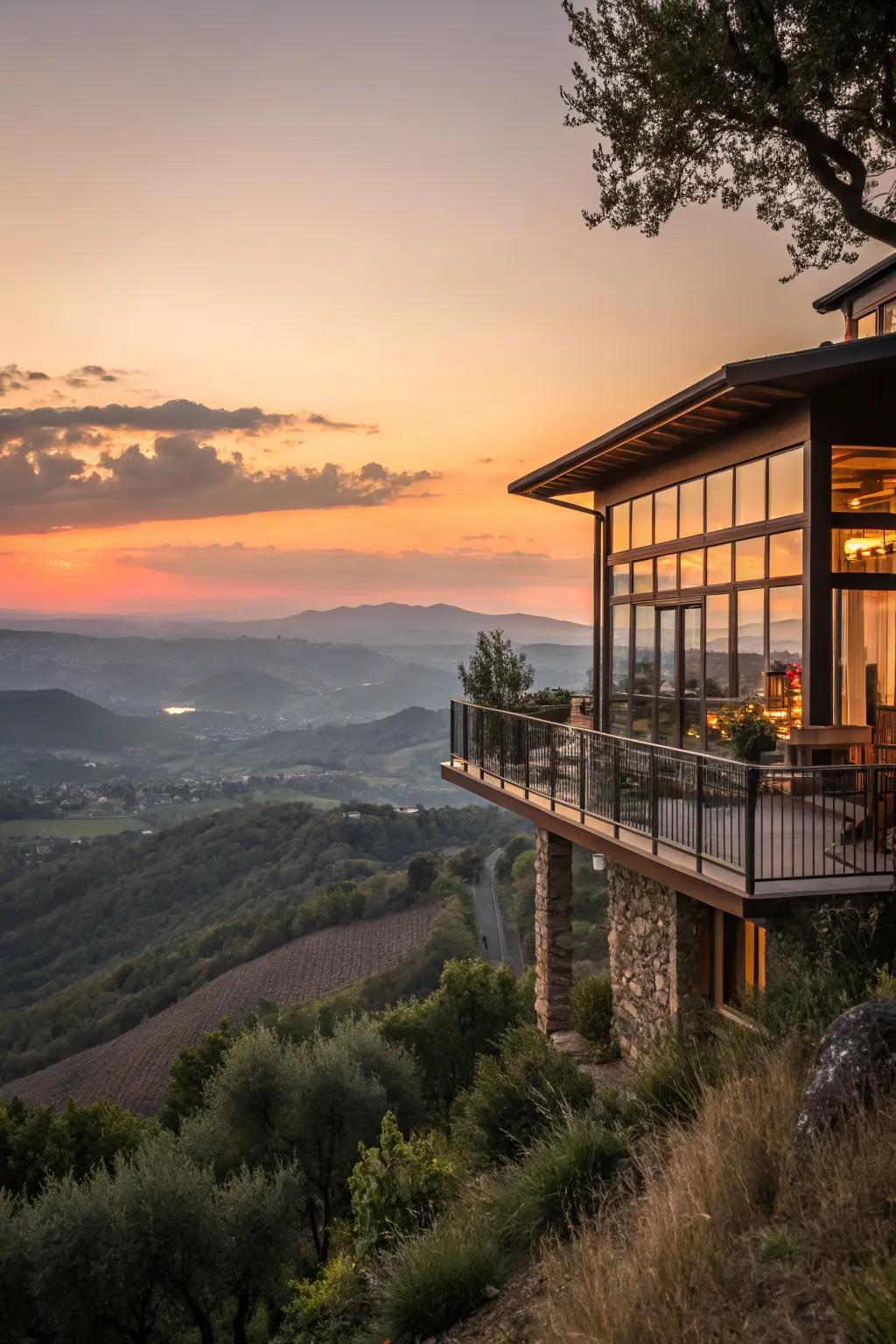
Large windows and balconies can transform your home into a panoramic viewing platform. I’ve stood in homes where the view becomes an ever-changing masterpiece, framed perfectly by thoughtful design.
Items that may come in handy:
- Floor-to-Ceiling Window Shades: Enhance privacy without sacrificing views. Install sleek shades that complement expansive windows.
- Outdoor Patio Furniture Set: Create a cozy outdoor seating area and enjoy panoramic views from your balcony any time.
- Decorative Balcony Lighting: Add ambiance to evening views with stylish lighting suitable for any balcony space.
5. Embrace Modern Architecture
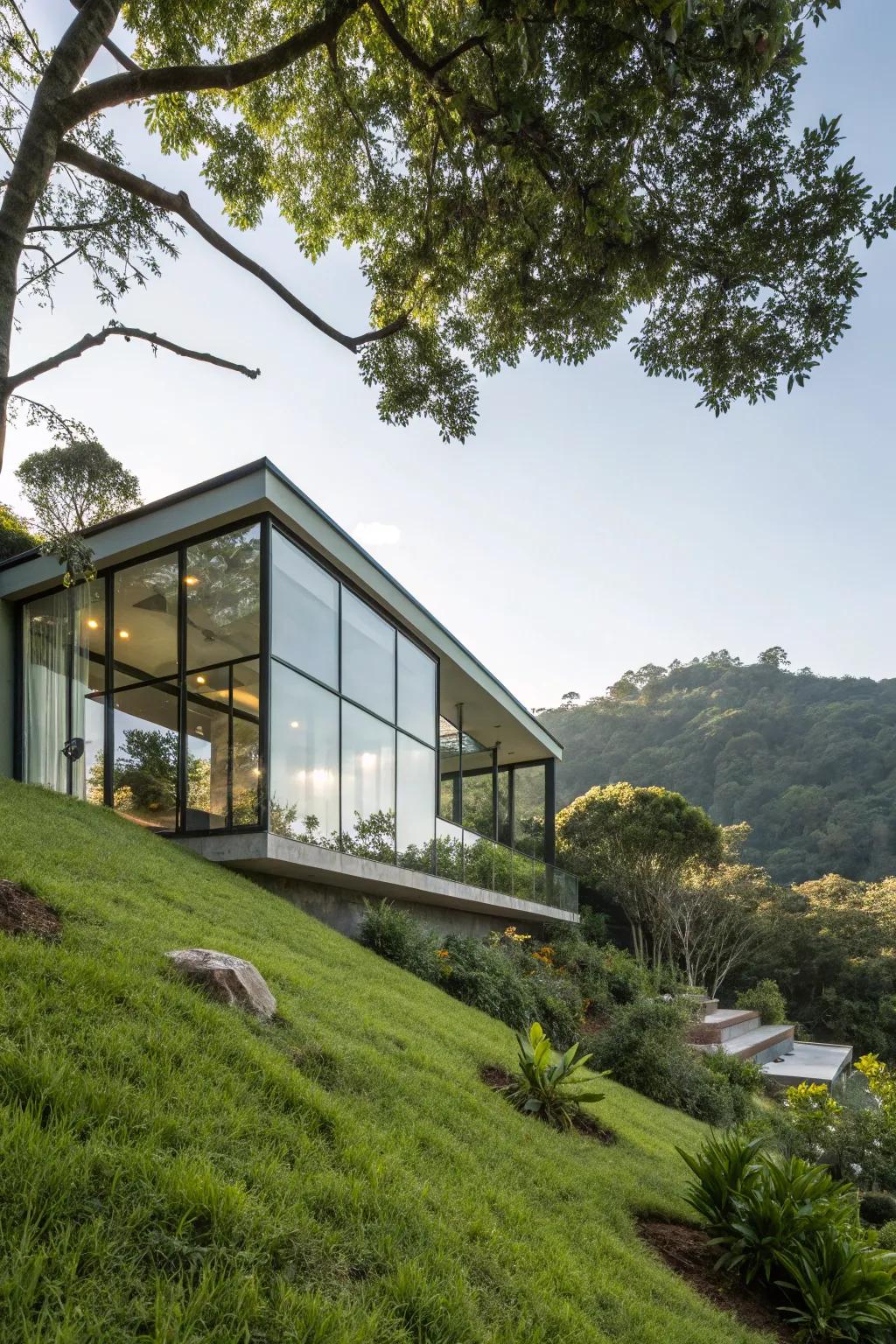
Picture a sleek, contemporary design with clean lines and expansive glass panels that invite the outdoors in. In my own projects, I’ve seen how these elements can transform a hillside house into a modern masterpiece.
These products might help:
- Floor-to-Ceiling Glass Panels: Transform your home with expansive glass panels that invite natural light and stunning views.
- Minimalist LED Lighting: Enhance the ambiance of your modern space with sleek, minimalist LED lighting solutions.
- Contemporary Outdoor Furniture: Create a seamless flow to the outdoors with chic, modern outdoor furniture pieces.
6. Incorporate Water Features
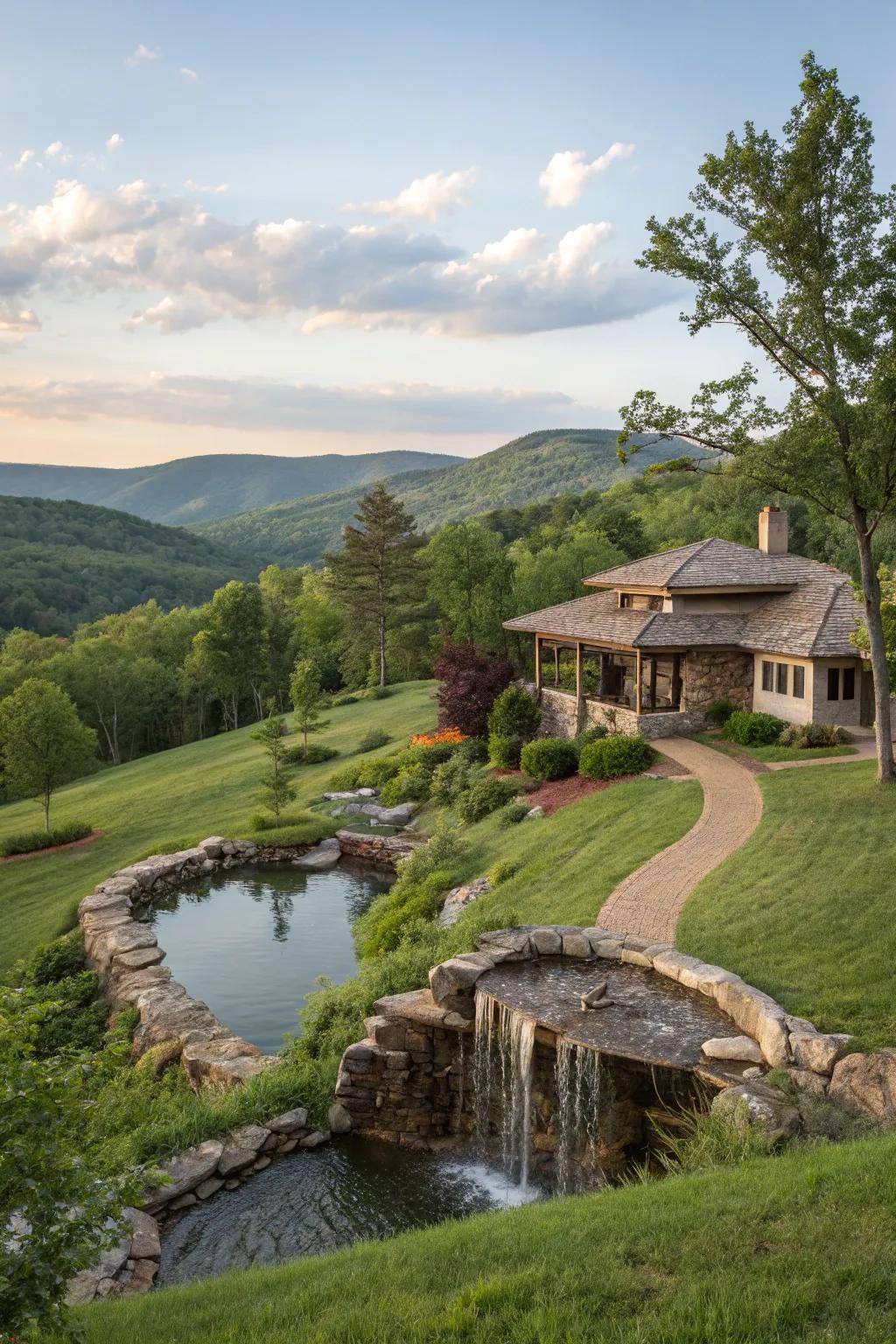
A waterfall or pond can add a tranquil element to your hillside retreat. I’ve seen how these features provide a soothing soundtrack to daily life.
Some handy options:
- Outdoor Waterfall Kit: Enhance your hillside retreat with a waterfall kit for a soothing outdoor experience.
- Garden Pond Liner: Create a serene pond on your hillside with a durable and flexible pond liner.
- Solar Fountain Pump: Install an eco-friendly solar pump to maintain water flow without additional energy costs.
7. Integrate Artistic Features
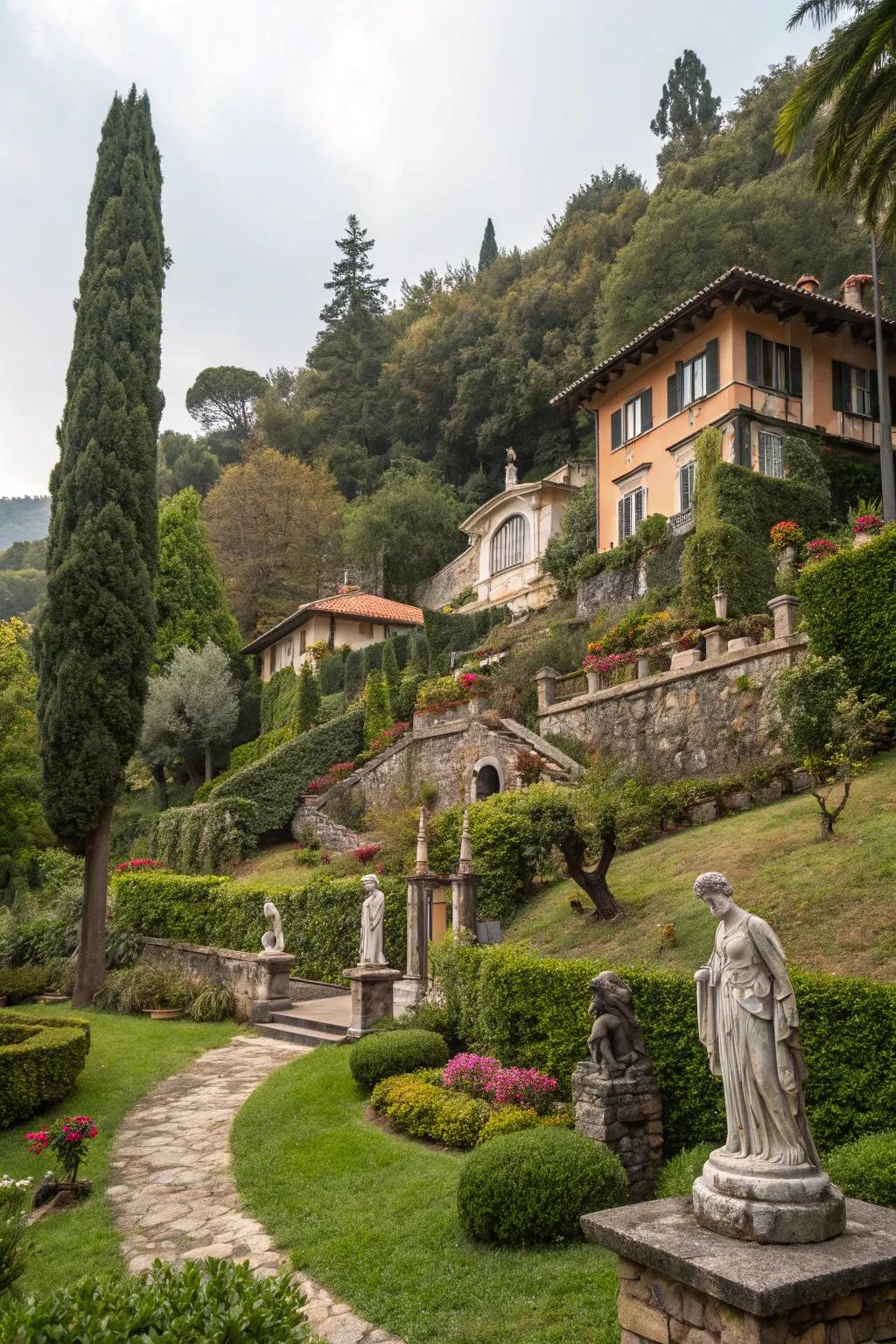
Incorporate sculptures or murals to add a personal touch to your hillside home. Art can turn any space into a gallery, reflecting your unique style.
A few suggestions:
- Outdoor Garden Sculpture: Enhance your hillside home’s elegance with a timeless outdoor garden sculpture. Add character today.
- Weatherproof Wall Mural: Bring life to your exterior walls with a vibrant weatherproof mural. Transform your space now.
- Stone Garden Statue: Add sophistication with a stone garden statue, elevating your landscape’s artistic allure effortlessly.
8. Design Inviting Outdoor Spaces
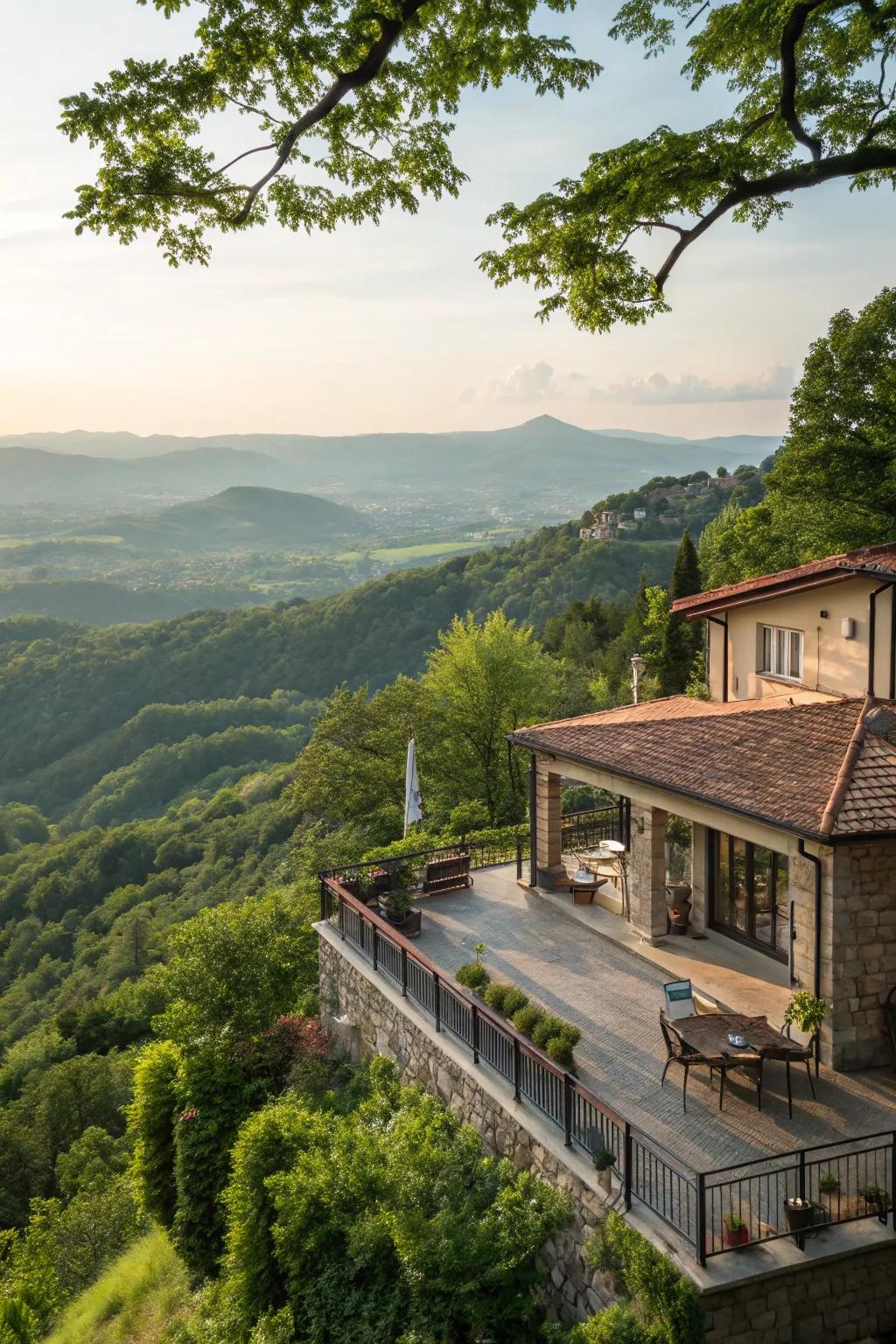
Hillsides offer the perfect opportunity for patios and decks with spectacular views. I love crafting spaces where you can sip coffee at sunrise or dine under the stars.
A few relevant products:
- Outdoor Bistro Set: Enhance your patio with a charming bistro set for cozy coffee mornings or romantic dinners.
- LED String Lights: Create a magical evening ambiance with energy-efficient LED string lights for your hillside deck.
- Retractable Patio Awning: Enjoy comfortable shade on sunny days with a stylish retractable awning for your patio.
9. Utilize Stilt Foundations
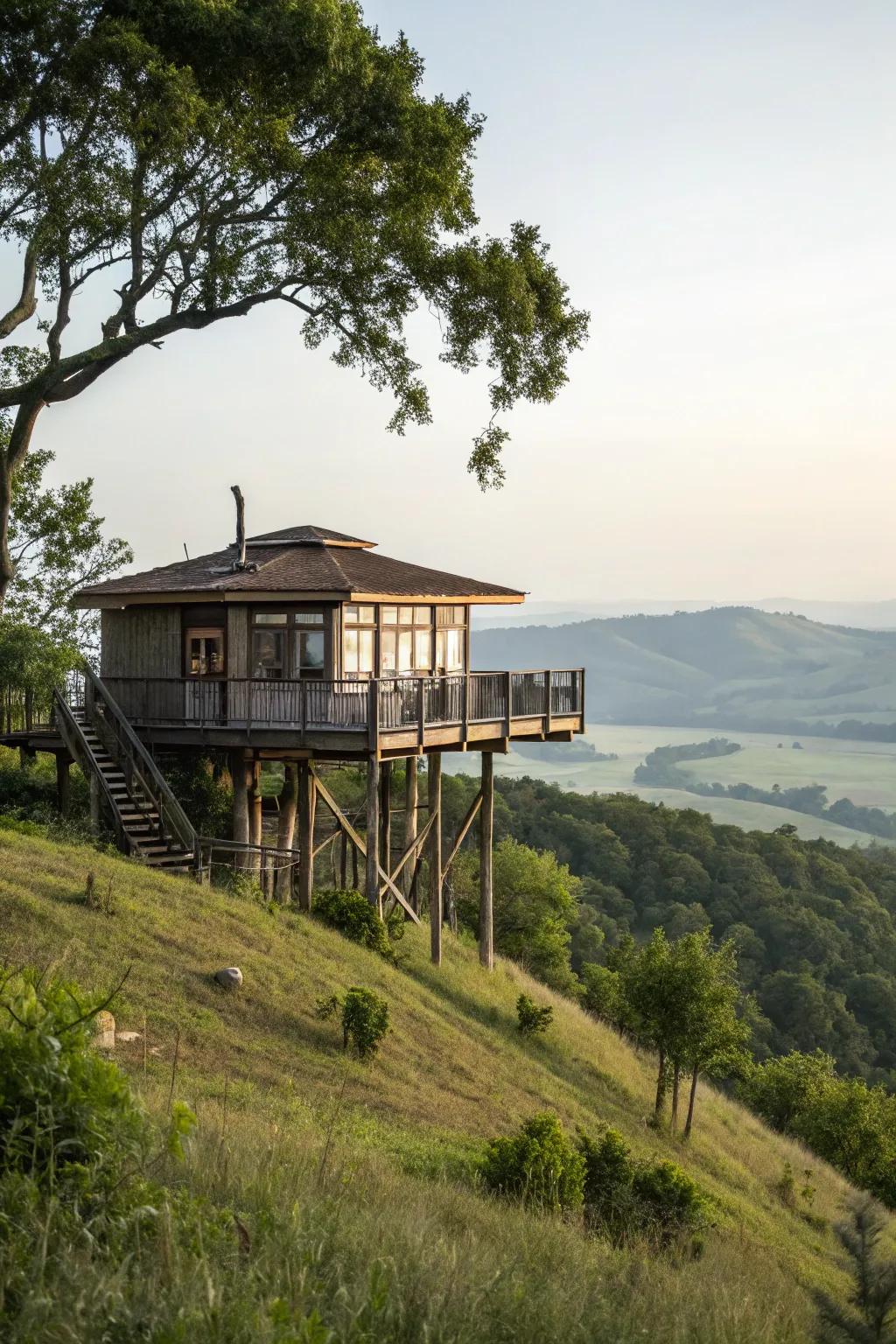
Stilts can lift your home above the ground, offering protection from erosion and maximizing views. This design lets you tread lightly on the land while enjoying all it has to offer.
Give these a look:
- Adjustable Steel or Aluminum Stilts: Elevate your home with durable stilts, ensuring stability and stunning views. Perfect for hillside locations.
- Weather-Resistant Decking: Create a beautiful, durable deck that withstands weather, enhancing your elevated home’s outdoor space.
- Outdoor Stairway Kits: Install sturdy stairs to easily access your stilted home, combining safety with elegant design.
10. Highlight Unique Architecture
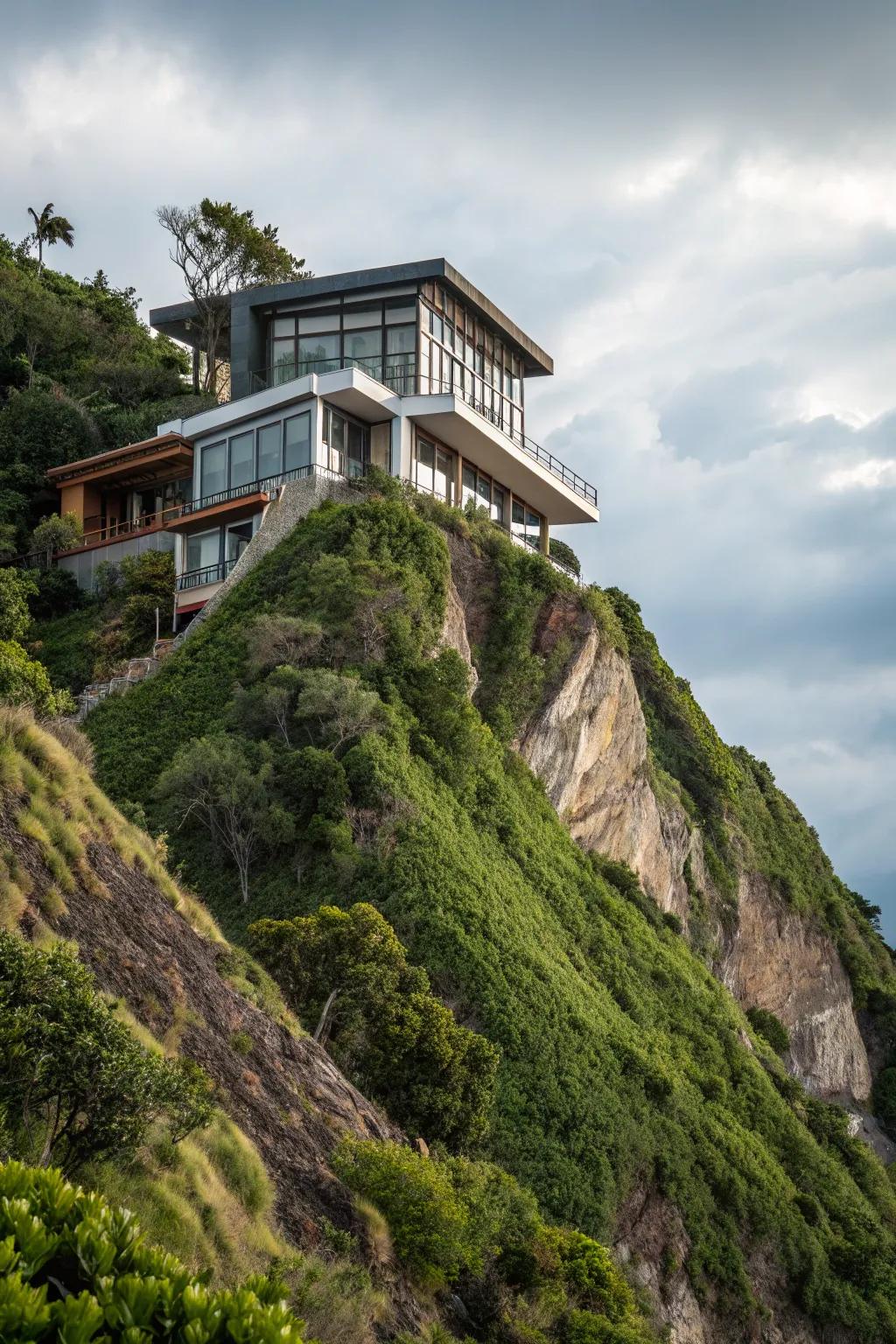
Let your creativity shine with unusual designs that capture the imagination. I’ve seen how bold architectural choices can turn a simple hill into a canvas for innovation.
Useful items to consider:
- Modern LED Wall Sconce: Enhance your hillside home with sleek lighting for a contemporary architectural touch.
- Panoramic Floor-to-Ceiling Windows: Install expansive windows to maximize breathtaking views and natural light in your unique home.
- Biophilic Plant Wall System: Create a living, green wall that complements your innovative hill house design beautifully.
11. Integrate Natural Materials
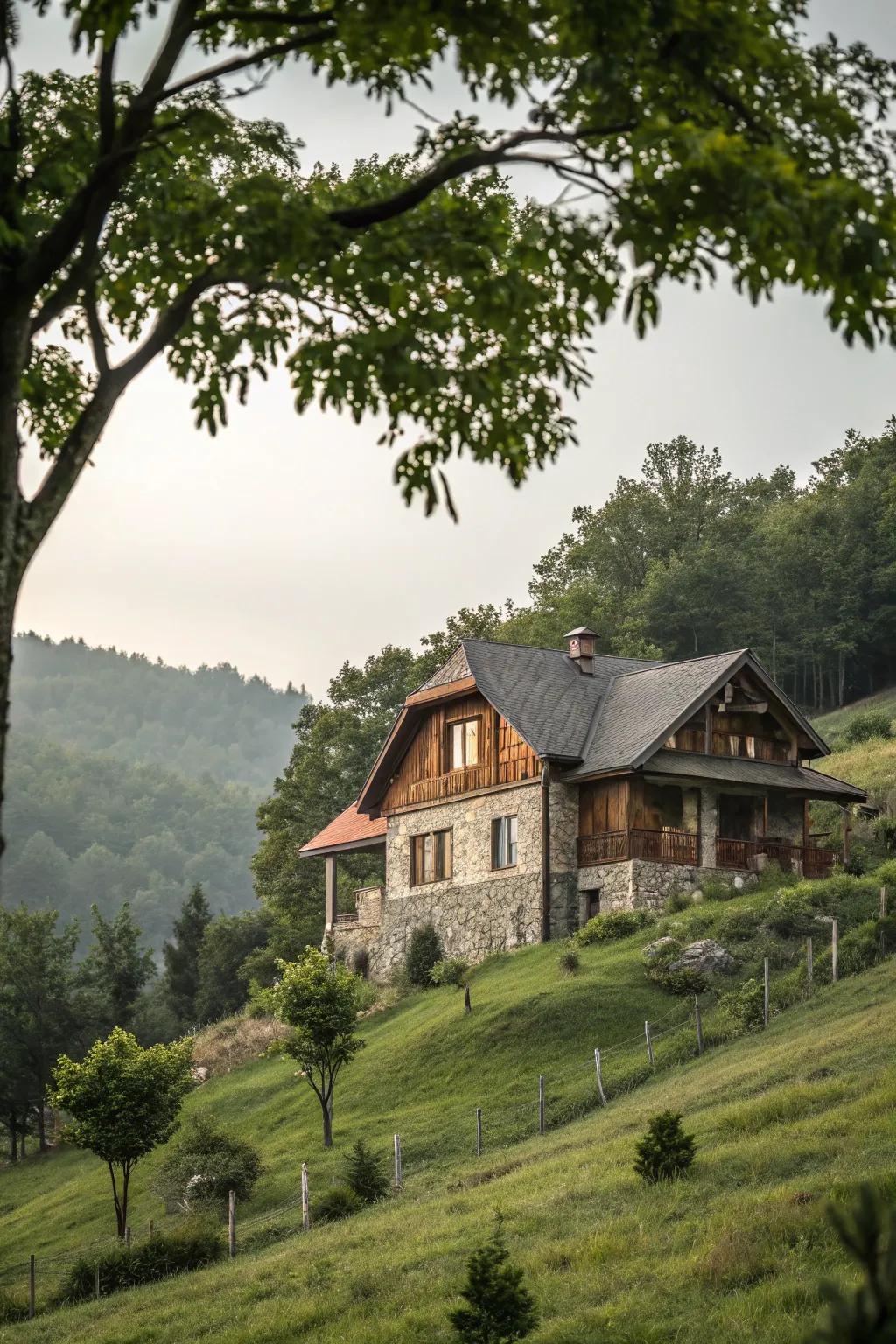
Using wood and stone can help your home blend seamlessly into the hillside. I’ve found that these materials not only offer beauty but also create a warm, inviting atmosphere.
Try these:
- Reclaimed Wood Wall Paneling: Transform your space with rustic charm. Add warmth and texture with natural wood finishes.
- Natural Stone Veneer Siding: Elevate your home’s elegance. Enhance curb appeal with beautiful, eco-friendly stone veneers.
- Wooden Outdoor Furniture Set: Create an inviting outdoor space. Enjoy durability and style with classic wooden designs.
12. Incorporate Sustainability Features
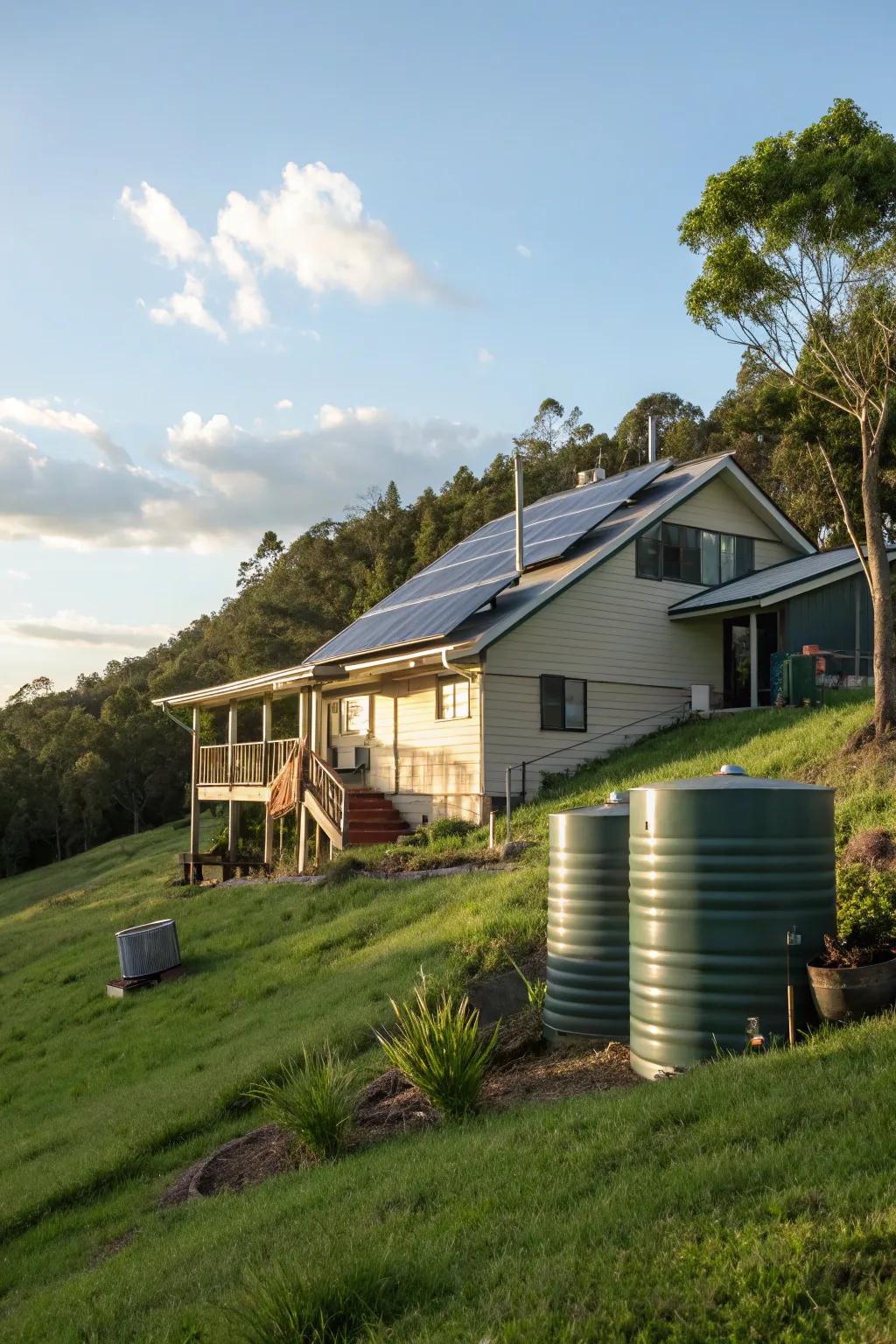
Eco-friendly designs can enhance both the beauty and efficiency of your home. From solar panels to rainwater collection, these features can make your hillside house a model of sustainability.
Possibly handy products:
- Solar Panel Kit: Elevate your home’s energy efficiency with solar panels that harness the sun’s power effectively.
- Rainwater Collection System: Collect and utilize rainwater efficiently with this eco-friendly and practical solution for your home.
- Energy-Efficient LED Light Bulbs: Reduce energy consumption with LED light bulbs that provide long-lasting, eco-friendly illumination.
13. Add a Green Roof
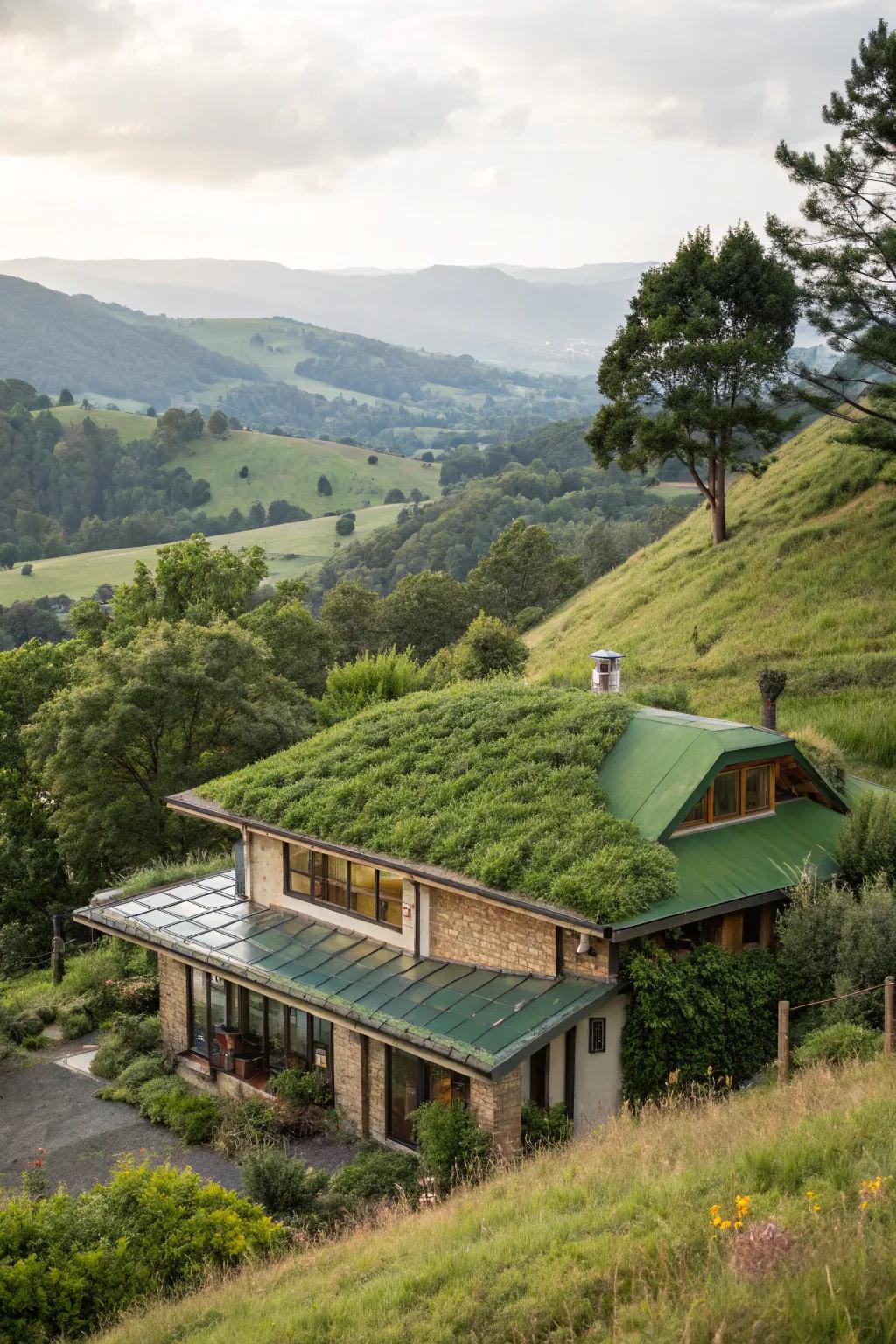
A green roof can blend your home with the surrounding landscape and provide insulation. I’ve worked on projects where the roof becomes a living space, full of vibrant plant life.
Might be a good match:
- Green Roof Modular System: Install a modular green roof system for an easy and efficient transformation of your rooftop.
- Roof Drainage Layer Mat: Ensure proper drainage with a specialized mat that protects and prolongs your green roof’s lifespan.
- Sedum Plant Mix for Green Roofs: Enhance your roof’s aesthetics and biodiversity with a diverse mix of hardy sedum plants.
14. Add a Home Office with a View

Imagine working with a breathtaking view as your backdrop. I’ve created home offices where the scenery inspires creativity and productivity.
May just do the trick:
- Ergonomic Office Chair: Enhance comfort and posture while admiring the view with a supportive ergonomic office chair.
- Adjustable Standing Desk: Boost productivity and enjoy flexibility with an adjustable standing desk in your scenic office.
- Noise-Cancelling Headphones: Improve focus and reduce distractions with noise-cancelling headphones, perfect for your serene workspace.
15. Incorporate Natural Lighting
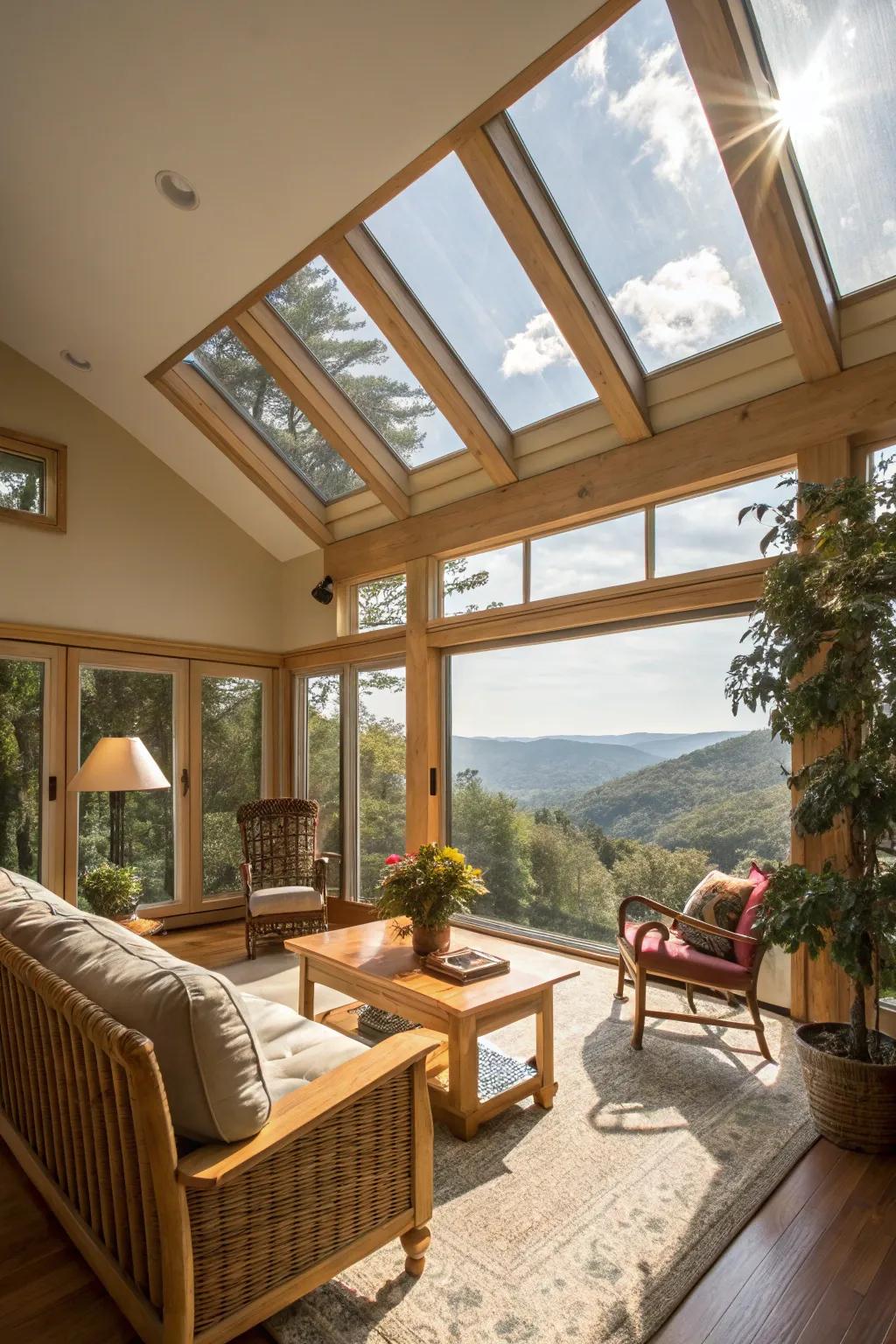
Maximize daylight with skylights and strategically placed windows. In my designs, natural light has transformed spaces, making them feel open and welcoming.
Maybe worth checking out:
- Energy-Efficient Skylights: Enhance your space with skylights to flood your room with natural, welcoming daylight.
- Motorized Window Blinds: Easily control sunlight exposure with motorized blinds for comfort and efficiency.
- Light-Filtering Curtains: Install light-filtering curtains to soften daylight while maintaining an open atmosphere.
16. Design Open-Concept Interiors
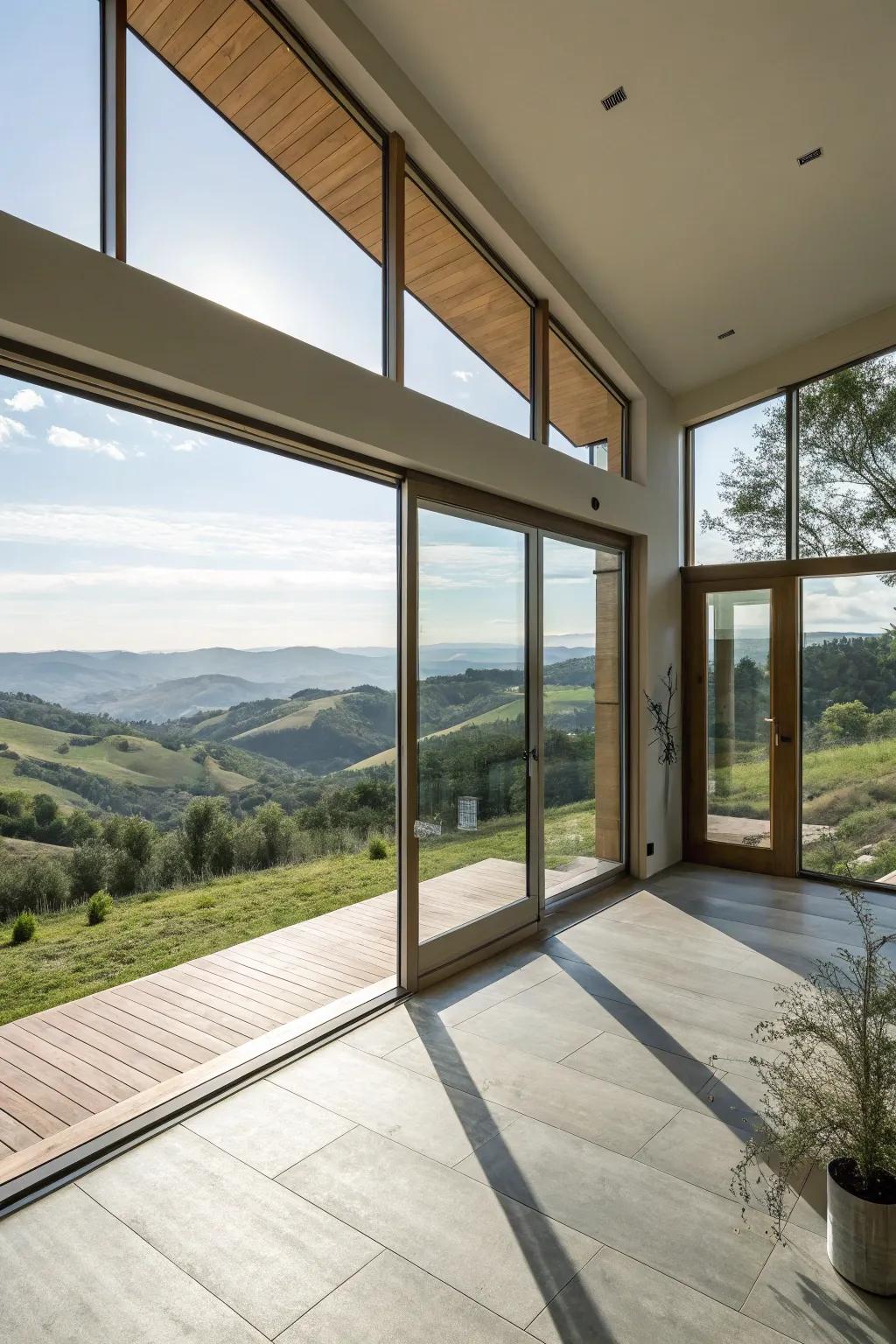
Open floor plans can make hillside homes feel spacious and connected. I love how these designs encourage flow and create airy, inviting spaces.
A few things you might like:
- Sliding Glass Patio Doors: Maximize your views and natural light with sleek, modern sliding glass patio doors. Upgrade now!
- Indoor Planters: Bring nature indoors with stylish planters that complement your airy, open-concept design. Shop today!
- Minimalist Furniture Set: Enhance your open space with a chic minimalist furniture set for a modern, airy feel.
